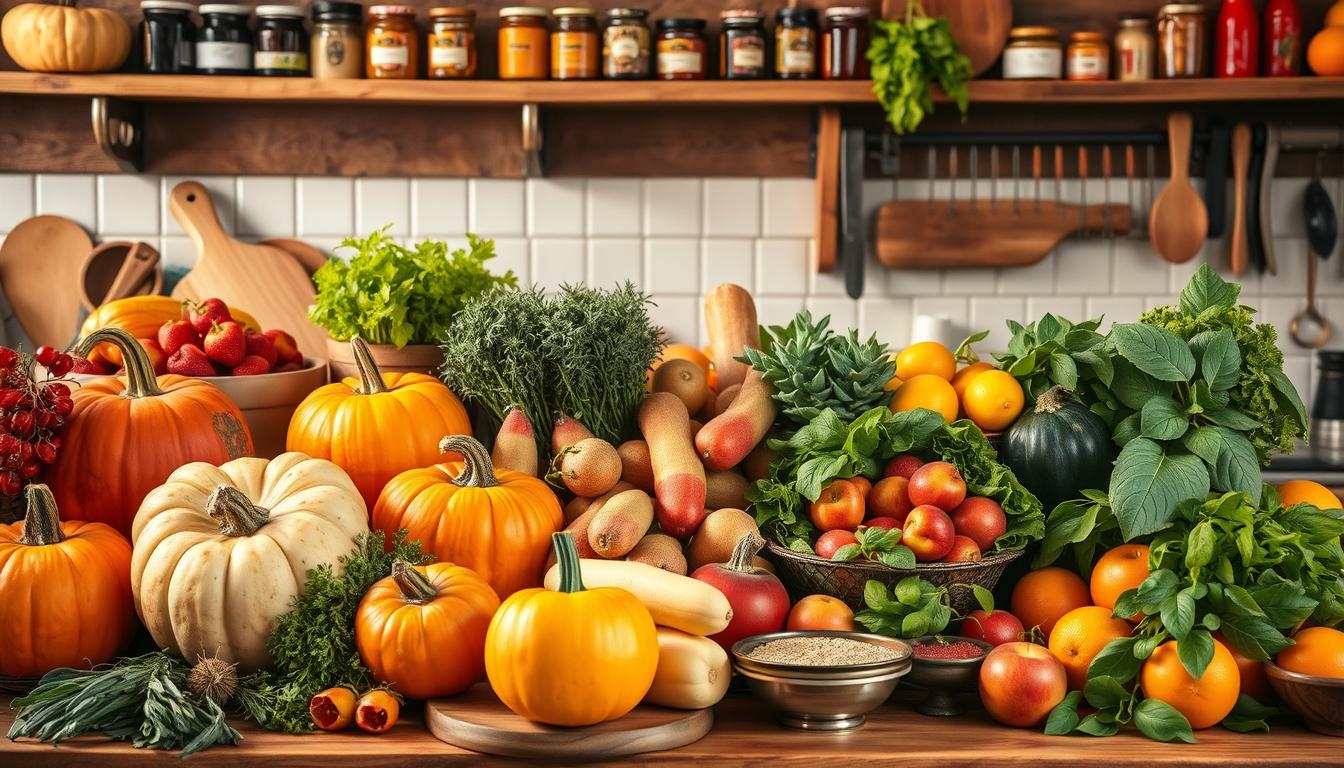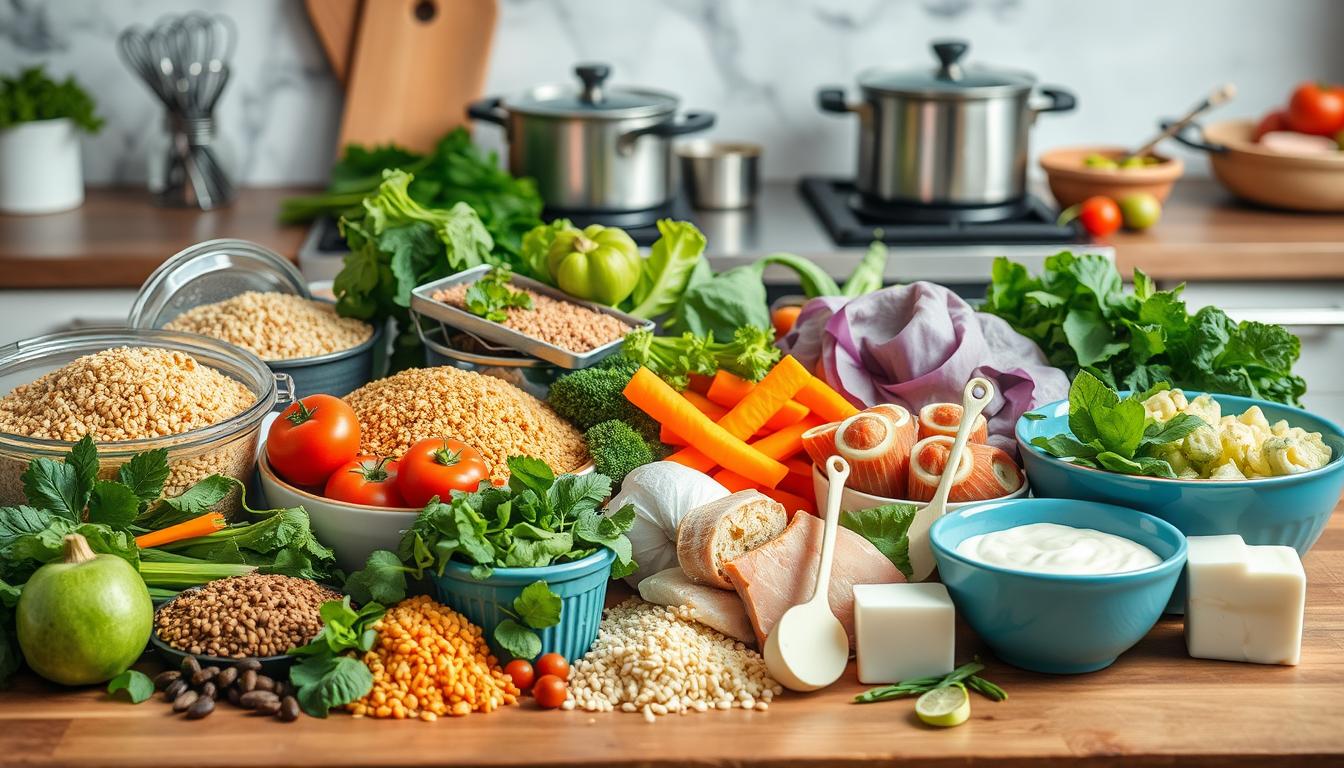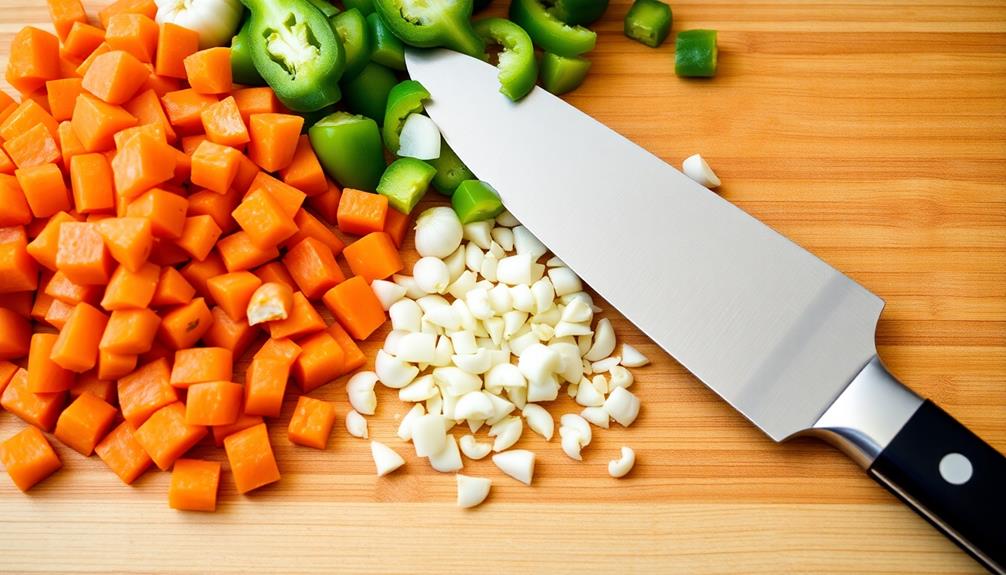As the seasons change, so too should your approach to cooking. Have you ever felt that special joy of biting into a ripe tomato straight from the vine during summer or savoring a warm bowl of soup as leaves crunch beneath your feet in autumn? Seasonal cooking isn’t just about using ingredients that are fresh; it’s an invitation to engage with nature’s rhythm, allowing you to nourish not only your body but also your soul. Choosing seasonal recipes means connecting with local farmers, supporting your community, and enjoying flavors that sing with vitality. Imagine whipping up that “Absurdly Addictive Asparagus” recipe that has enchanted thousands on Food52, just as the asparagus peaks in your locality. Or perhaps, after a day of cherry-picking—despite the cost—you return home with an abundant harvest, ready to transform those cherries into a vibrant Fresh Cherry Salsa. Seasonal cooking ideas encourage you to savor the present moment, ensuring that your meals are exciting and invigorating, one season at a time.
Key Takeaways
- Seasonal recipes enhance flavor and nutrition, creating vibrant meals.
- Choosing fresh ingredients supports local farmers and strengthens communities.
- Engaging in seasonal activities, like cherry-picking, brings you closer to your food sources.
- Popular recipes, like those on Food52, reflect community engagement.
- Exploring seasonal cooking ideas can invigorate your kitchen and inspire creativity.
Understanding the Importance of Seasonal Cooking
Embracing seasonal cooking ideas not only enhances your culinary experience, but also fosters a connection with the food you consume. Purchasing produce when it is in season maximizes its flavor and nutrients, allowing you to enjoy the freshest ingredients available. Studies indicate that certain vegetables, like broccoli, can possess nearly twice the vitamin C in the fall compared to spring varieties. This finding underscores the numerous benefits of seasonal cooking.
Seasonal ingredients retain more nutrients due to shorter transportation and storage times. For example, leafy greens can lose up to 50% of their original vitamin C after just a few days on store shelves. By choosing seasonal produce, you support local farmers, which in turn boosts the economy while promoting food diversity. This effort will lower greenhouse gas emissions linked to long-distance transport and extended cold storage.
The concept of seasonal cooking encourages you to embrace a lifestyle focused on freshness and sustainability. Utilizing a seasonal produce guide can simplify meal planning and allow for creative dish preparation. Incorporating seasonal flavors makes cooking exciting and adds variety to your meals. Notably, the cost-effectiveness of seasonal foods is a significant advantage, since they tend to be cheaper when abundant in local markets.
For those looking to preserve the essence of seasonal ingredients, methods like canning, fermenting, or freezing can help retain flavors year-round. Your journey towards seasonal cooking can be further enriched by exploring recommended cookbooks, such as “The Flavor Bible,” “The Farmers Market Cookbook,” and “True Food: Seasonal, Sustainable, Simple, Pure.”

Benefits of Using Fresh Ingredients Recipes
Utilizing fresh ingredients recipes transforms your meals from ordinary to extraordinary. Fresh produce not only enhances flavor but also packs a nutrition punch, offering an array of health benefits for you and your family.
Shopping at local markets, like the Anderson County Farmers Market or the Abbeville County Farmers Market, allows you to access a variety of seasonal fruits and vegetables. These markets provide fresh options that are often more nutrient-dense than their canned or frozen counterparts. In the summer, popular choices like berries, peaches, and tomatoes can elevate your dishes in a delightful way.

The economic advantages of incorporating seasonal produce into your cooking are significant. Fresh ingredients are often offered at competitive prices, especially when purchased directly from farmers, making it a cost-effective choice. Support for local farmers fosters sustainability and strengthens community economies. Plus, you can take advantage of programs like the Senior Farmers’ Market Nutrition Program Vouchers and WIC eligibility, which further encourages the purchase of fresh fruits and vegetables.
- Fresh ingredients offer better nutritional value.
- Seasonal produce boasts optimal flavor and freshness.
- Grilling seasonal vegetables enhances their natural flavors.
- Local produce has a lower carbon footprint due to reduced transportation.
Exploring fresh ingredients allows for creative culinary adventures. A simple grilled vegetable medley using zucchini, eggplant, and bell peppers can be a highlight of your summer meals. The vibrant colors of a Caprese salad using ripe tomatoes and fresh basil not only make the dish visually appealing but also showcase the benefits of fresh produce.
By choosing local and seasonal foods, you increase your meals’ diversity, supporting both your health and the economy while enjoying delicious, flavorful dishes.
Seasonal Meal Planning Made Easy
Seasonal meal planning transforms the way you approach your kitchen routine. By utilizing fresh ingredients available in each season, you can create delicious and satisfying meals while maximizing flavor and nutrition. Engaging in easy meal prep allows you to save time and money while enjoying a variety of dishes that celebrate the changing seasons.
To start, consider creating a meal planning binder. This tool can help you organize favorite recipes and streamline your shopping list. Begin by downloading templates from reliable sources such as Homemade by Carmona. Customize these to fit your personal taste and needs, adding sections for appetizers, sides, and potluck contributions.
Implement a color-coding system for better organization. Assign specific colors to each meal type: for instance, use blue for soups, green for salads, and red for main dishes. This visual aid simplifies the process of selecting recipes during your weekly meal prep sessions.
Here’s an example of what your binder might include:
| Meal Type | Recipe Ideas | Preparation Notes |
|---|---|---|
| Stove-Top | Stir-fried veggies, sautéed greens | Prepare fresh veggies while they are in season for maximum flavor. |
| Crock-Pot | Slow-cooked soups, stews | Batch cook on weekends for quick meals during busy weekdays. |
| Breakfast | Casseroles, overnight oats | Prep breakfast casseroles to save time in the mornings. |
| Lunch/Dinner | Grilled chicken, seasonal salads | Rotate proteins throughout the week to maintain variety. |
Consider planning meals around local farmer’s market schedules. This promotes the use of seasonal produce, creating an eco-friendly approach to your meal prep. During warmer months, incorporate refreshing salads with the greens you grow yourself. In colder months, hearty soups or casseroles can be your go-to.
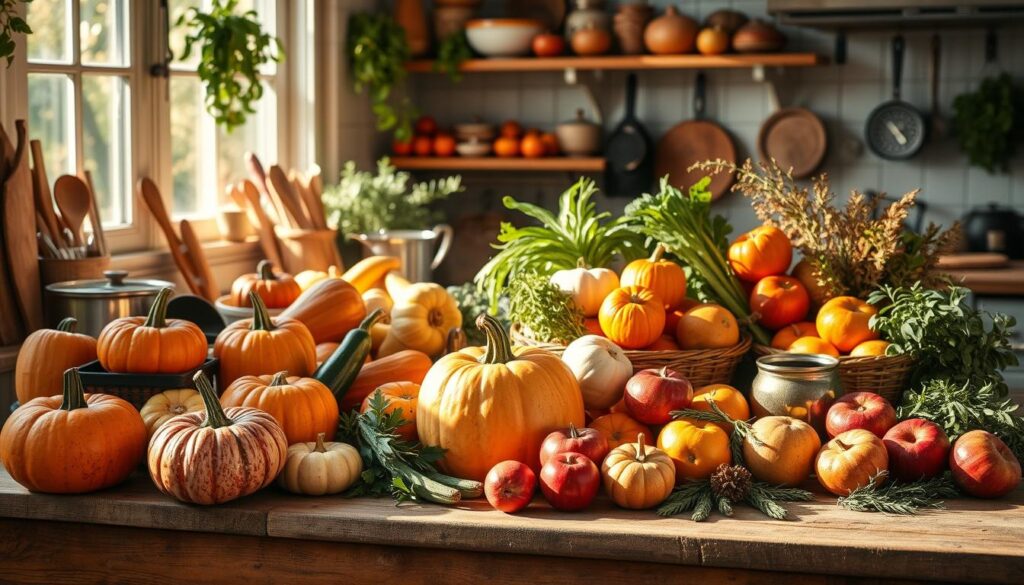
The flexibility of this system allows you to make adjustments based on your family’s needs. Whether someone has food sensitivities or dietary preferences, having a core meal plan lets you swap ingredients easily. This strategy supports a healthy lifestyle without feeling restrictive.
By focusing on seasonal meal planning, you can enjoy cooking while efficiently managing your time in the kitchen. This method not only simplifies your meal prep but also enhances the quality and diversity of your meals throughout the year.
Exploring Farm-to-Table Cooking
Farm-to-table cooking represents a growing movement that emphasizes the importance of connecting consumers directly with fresh, healthy ingredients sourced from local farms. This approach not only enhances the quality of meals but also fosters a deeper appreciation of where food comes from. By utilizing local produce, you can create dishes that reflect the seasons and the unique flavors of your region.
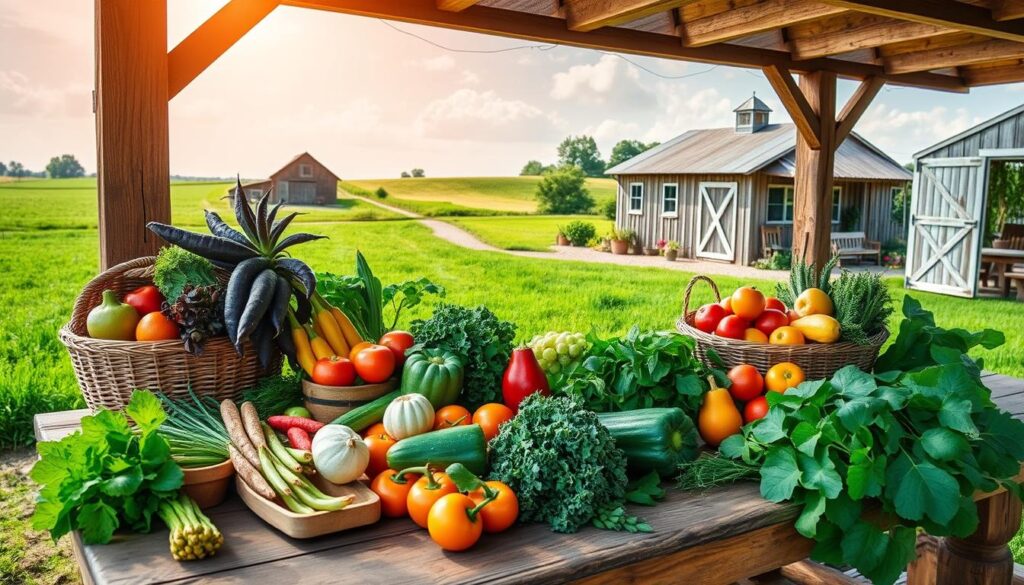
Engaging in farm-to-table practices contributes to agricultural sustainability, protecting our environment while promoting responsible farming methods. By prioritizing local sources, communities can better preserve fertile fields and clean water. As a home chef, you can play a significant role in this movement. Activities such as planting your own garden, joining food co-ops, and visiting farmers markets can deepen your connection to the food you cook.
- Food co-ops offer fair prices and high-quality food, enhancing community engagement.
- Community Supported Agriculture (CSA) programs provide fresh produce directly from farms, leading to introductions to new varieties and affordability.
- Farmers markets showcase a broader selection of fruits and vegetables, encouraging consumers to learn more about their food sources.
Farm-to-table cooking not only benefits your palate but also supports local economies. The cooperative relationships formed between growers and food service professionals mean greater access to fresh ingredients, increased menu variety, and reduced carbon footprints. This movement creates a vibrant link between diners and their plates, inviting you to explore and enjoy the flavors of the season.
| Benefits of Farm-to-Table Cooking | Description |
|---|---|
| Fresh Ingredients | Utilizes seasonal and locally sourced produce, enhancing flavor and nutrition. |
| Sustainability | Supports environmental protections and preserves local farms and ecosystems. |
| Community Connection | Builds relationships between consumers and local farmers, enhancing local economies. |
| Variety | Provides access to a wider range of seasonal items and unique produce varieties. |
Embracing the farm-to-table philosophy allows you to not only enjoy delicious meals but also become a part of a larger movement aimed at nurturing a sustainable and connected food system. Whether you’re a seasoned cooker or just starting, exploring local produce opens up new culinary horizons.
Seasonal Cooking Ideas to Spice Up Your Kitchen
Exploring seasonal cooking ideas brings a delightful twist to your meals, allowing you to savor the freshest ingredients while supporting local farms. Utilizing local produce not only enhances your dishes but also promotes sustainability. From vibrant summer salads to hearty winter stews, the diverse variety of seasonal ingredients opens up endless culinary possibilities.
Incorporating Local Produce
Integrating local produce into your cooking allows you to embrace the full flavors of the season. For instance, prepare Grilled Zucchini Carbonara during the warm months when zucchini is plentiful. In the fall, you might enjoy a Creamy Chicken & Corn Skillet that highlights sweet corn harvested nearby. Seasonal vegetables, such as cherry tomatoes and ribeye steak, work wonderfully in easy-to-make dishes like Grilled Steak Salad or Smashed Burger Tacos.
Utilizing Seasonal Herbs for Enhanced Flavor
The magic of seasonal herbs can elevate your cooking in remarkable ways. Fresh basil enhances summer recipes like Summer Stuffed Shells while adding a fragrant touch to Grilled Chicken Salad. In winter, use hearty herbs like rosemary to enrich the profile of a Slow-Cooked Pot Roast. Seasonal herbs not only add depth and flavor; they also bring brightness to your dishes, making every meal an opportunity for creativity.

Seasonal Recipe Inspiration for Every Meal
Seasonal cooking brings excitement to the kitchen, offering fresh and vibrant flavors to elevate every meal. Embracing seasonal recipe inspiration allows you to create dishes that reflect the produce available throughout the year. You can enjoy light dishes in spring and hearty comfort foods during the colder months, ensuring a diverse and satisfying menu.
Light Dishes for Spring
Spring signifies a time for rejuvenation, and your meals can reflect this change. Incorporating seasonal ingredients like asparagus, spring greens, and rhubarb can inspire delightful salads, refreshing soups, and quick stir-fries. Simple recipes, such as the 20 Minute Pepper Steak Stir Fry, utilize vibrant veggies while being family-friendly and requiring minimal preparation time. Those looking for sweeter options can indulge in Healthy Pumpkin Cheesecake, a rich dessert that remains lower in calories, perfect for entertaining guests.
Hearty Comfort Foods for Fall and Winter
As the weather turns cooler, hearty winter meals become essential. Autumn brings an abundance of ingredients like pumpkin, butternut squash, and Brussels sprouts. These can be transformed into comforting dishes such as Healthy Beef Stroganoff or cozy casseroles that warm you from the inside out. For a delightful side, consider Simple Saffron Brown Rice, which complements many winter meals beautifully. These hearty recipes not only nourish the body but also embody the essence of the season.

Cooking with Seasonal Fruits
Cooking with seasonal fruits not only enhances your meals but also boosts their nutritional value. Taking advantage of summer berries and autumn apples can bring vibrant flavors and textures to your dishes. Here are some creative ways to incorporate these delicious fruits into your cooking.
Creative Ways to Use Berries in Summer
Summer berries like strawberries, blueberries, and raspberries are perfect for refreshing desserts and salads. Consider making a summer galette with a tart-sweet filling that combines blueberries, raspberries, and strawberries for a burst of flavor. For a lighter option, try Jacques Pépin’s easy summer watermelon salad featuring juicy watermelon, mint, olives, and feta. You can also whip up a delightful berry sauce to pair with grilled meats, such as the one created by Nicole A. Taylor, which complements pork rib chops with shallots and chipotles.
- Strawberry bread with chocolate chips for a sweet breakfast treat.
- Refreshing lemon bars with a poppy seed crust to beat the heat.
- Berry granita served with honey-sweetened pesto for a unique dessert.
- Summer salads topped with plums and cherries for a juicy twist.
Delicious Apple-Based Recipes for Autumn
As the leaves begin to fall, autumn apples come into season, offering crispness and sweetness perfect for various dishes. Consider baking an apple crisp as a delightful dessert. For a lighter meal, create a vibrant apple salad, blending crunchy apples with mixed greens and nuts for added texture. Apples also shine in savory dishes; try incorporating them into a butternut squash soup for a gentle sweetness.
- Classic apple pie made with tart Granny Smith apples.
- Warm apple cider to enjoy during chilly evenings.
- Apple-studded oatmeal for a hearty breakfast.
- Grilled apple sandwiches with cheese for a unique twist on a classic.
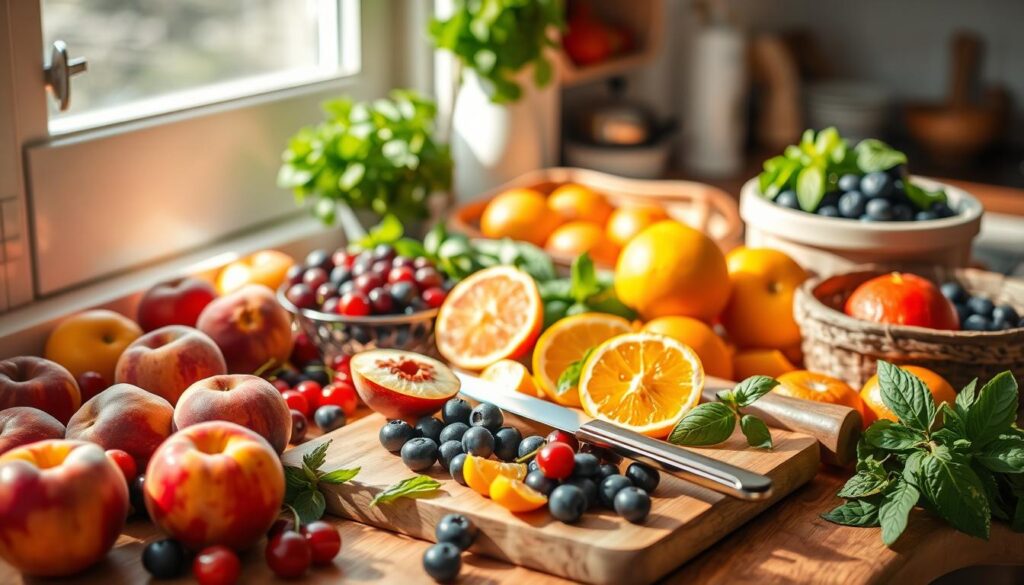
Seasonal Produce Recipes to Try This Month
Enjoying seasonal produce recipes brings incredible flavor and nutrition to your table. During peak harvest, you can explore a variety of vibrant dishes that highlight fresh ingredients available in your area. This month, focus on easy-to-make vegetable options and lighter salads perfect for warmer weather.
Vegetable Dishes for Peak Harvest Season
As summer progresses, you have access to a bounty of vegetables packed with flavor. Here are some delightful dishes featuring seasonal ingredients: For a taste of summer, try a refreshing cucumber and tomato salad, with fresh basil and a drizzle of balsamic vinaigrette. Or, fire up the grill and savor the smoky sweetness of grilled corn on the cob, slathered with chili lime butter. This seasonal ingredient spotlight allows for endless culinary creativity, so take advantage of the vibrant and fresh produce available during these warm months.
- Tomato and Basil Stir-Fry: A quick sauté of ripe tomatoes and aromatic basil creates a fresh, savory dish.
- Zucchini and Squash Noodles: Spiralized zucchini combined with squash makes for a light yet satisfying meal.
- Sweet Corn Chowder: This comforting soup highlights sweet, juicy corn with minimal ingredients.
- Grilled Eggplant: Marinate eggplant in spices and grill to perfection for a healthy side.
Light, Refreshing Salads in Warmer Weather
Refresh yourself with invigorating salads that incorporate seasonal produce. These recipes not only celebrate the flavors of summer but are also quick to prepare:
- Peach and Blueberry Salad: A delightful mix of juicy peaches and sweet blueberries tossed with greens.
- Cucumber and Sweet Onion Salad: Crisp cucumbers paired with thinly sliced onions create a perfect side dish.
- Watermelon and Feta Salad: Juicy watermelon cubes mixed with feta cheese and mint for a cooling treat.
- Brussels Sprouts Salad: Shredded Brussels sprouts topped with nuts and a light vinaigrette for crunch.

Discovering new seasonal produce recipes to try this month allows you to enjoy the freshest ingredients available, ensuring that your meals are both delicious and nutritious. Embrace the peak harvest season by creating these light vegetable dishes and refreshing salads that will brighten your dining experience.
Tips for Shopping Seasonal Ingredients at Local Markets
Shopping seasonal ingredients at local markets offers a delightful way to enhance your cooking while supporting your community. Engaging with local farmers allows you to understand what’s in season and learn about the freshest products available. This not only adds flavor to your meals but also ensures you get produce rich in nutrients.

When visiting local markets, timing plays a crucial role. Early mornings often yield the best selection, as farmers bring freshly harvested produce. Look for vibrant colors and a natural sheen, which indicate freshness. Familiarizing yourself with seasonal cycles can help you anticipate what will be available at the market.
- Try unique items—be adventurous and experiment with lesser-known vegetables and fruits. You might discover new favorites!
- Utilize frozen produce when needed. Frozen fruits and vegetables are harvested at their peak and retain many of their nutrients, making them an excellent alternative.
- Explore sales and discounts. Seasonal items tend to be more abundant, often resulting in great prices at local markets.
Participating in local markets not only delivers fresh produce but also strengthens the local economy. Regular visits help you uncover delectable options while supporting sustainable practices. In addition, many farmers markets accept benefits like SNAP or WIC, making it easier for everyone to access healthy, local food.
By focusing on seasonal cooking and shopping at local markets, you can enjoy vibrant flavors and support your community, all while eating healthy foods that nourish your body throughout the year.
How to Store and Preserve Seasonal Ingredients
Storing seasonal ingredients ensures that you can enjoy the freshness of your garden produce all year round. Planning for a year’s supply of food is essential, particularly in USDA zone 6b, where frost can last for around 180 days. By setting personal goals for quantities based on previous harvests, you can effectively determine the necessary amounts of ingredients to store.
Different preservation methods are available, each with unique benefits for preserving produce. You might consider:
- Canning: This method involves killing bacteria through high heat, sealing jars to prevent contamination. Hot water bath canning and pressure canning are two safe techniques.
- Freezing: This process removes moisture from produce, effectively extending its shelf life while retaining flavors and nutrients.
- Dehydrating: The popularity of this method continues to rise due to its longer shelf life. Dehydration removes 80-95% of moisture, yielding lightweight and compact food storage.
- Fermenting: Although less common with geographical changes, this process offers not only preservation but also adds unique flavors.
- Quick Pickling: This involves marinating vegetables in a vinegar-based brine and requires less than fifteen minutes to prepare.
You may want to focus on storing cold storage foods such as sweet potatoes, winter squash, carrots, onions, and turnips. For instance, aiming to harvest 200 pounds of sweet potatoes may lead to planting 35 plants instead of the recommended 48 due to climate considerations. Understanding individual needs can help in determining amounts accurately, with the “Individual Count” indicating how many vegetables or fruits to harvest.
The table below presents a breakdown of the various methods alongside their characteristics and benefits:
| Preservation Method | Key Benefits | Time Required |
|---|---|---|
| Canning | Prevents recontamination, long shelf life | Varies with method |
| Freezing | Preserves flavor and nutrients | 1-2 hours for preparation |
| Dehydrating | Lightweight, shelf-stable | Varies (4-12 hours) |
| Fermenting | Enhances flavor, provides probiotics | Days to weeks |
| Quick Pickling | Fast preparation, adds zest | Under 15 minutes |
Utilizing these methods not only enables you to enjoy a variety of flavors throughout the year but also ensures you make the most of your seasonal ingredients. Storing seasonal ingredients with strategic planning and care leads to maximizing your culinary experience while embracing sustainability.
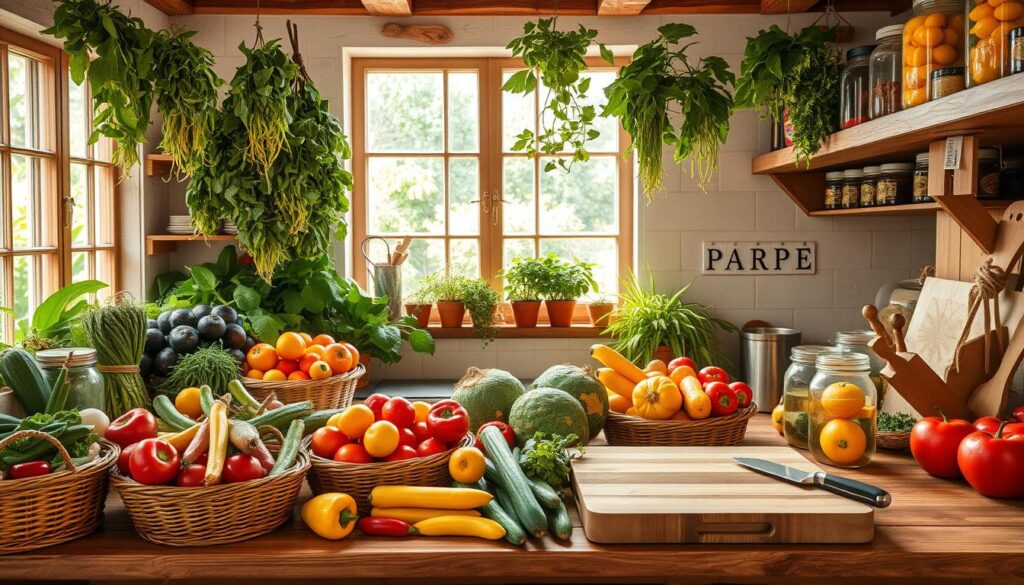
Conclusion
Embracing seasonal cooking ideas is not just a culinary trend; it’s a journey into flavor and sustainability. You’ve learned about the benefits of seasonal cooking, from enhanced taste to increased nutritional value, supporting local economies, and minimizing your environmental footprint. By prioritizing fresh ingredients like Jersey royal potatoes and forced rhubarb, you can elevate your meals while enjoying the beauty of what each season offers.
As you experiment with seasonal produce, consider incorporating unique ingredients such as wild garlic and Japanese knotweed shoots into your dishes. These additions not only showcase a commitment to sustainability but also invite you to explore new flavors that can invigorate your cooking. Keep in mind that adjusting your recipes for seasonal variations can lead to a meal that resonates more with your taste preferences.
Ultimately, the world of seasonal cooking invites you to deepen your culinary experiences. Don’t hesitate to step outside the boundaries of traditional recipes and make the most of local markets and seasonal ingredients available to you. Share your favorite seasonal cooking ideas with friends and family, and together, let’s celebrate the abundance of each season!
